Dale Earnhardt Jr.’s Callaway C12 Finds a New Home and Helps Define The Market
It’s hard to mention the names Callaway or Earnhardt without immediately thinking of Chevrolet. The renowned tuner and NASCAR royalty each arrived at the brand from different angles, and though they never combined their talents on track, there was one small bit of overlap: This 1999 Callaway C12 Coupe. Owned by Dale Earnhardt, Jr. for over a decade, this ultra-rare Callaway creation found a new home on Bring a Trailer this past week for $120,750. That price helps put a marker down for a marque whose top-tier models have proven a bit of a challenge to properly price.
Many people remember Reeves Callaway as the man who added serious twin-turbo horsepower to Corvettes in the ’80s. His company’s Sledgehammer Corvette is perhaps the most famous Callaway creation. Making the trip from the factory in Old Lyme, Connecticut to a high-speed test track at the Transportation Research Center in East Liberty, Ohio, the Sledgehammer coursed the oval at a record-breaking 254.76 mph (remember, this was in 1988, when a Ferrari F40 would get you a mere 199 mph). After the run, the car cruised home again in comfort, tunes playing and AC blowing cold.
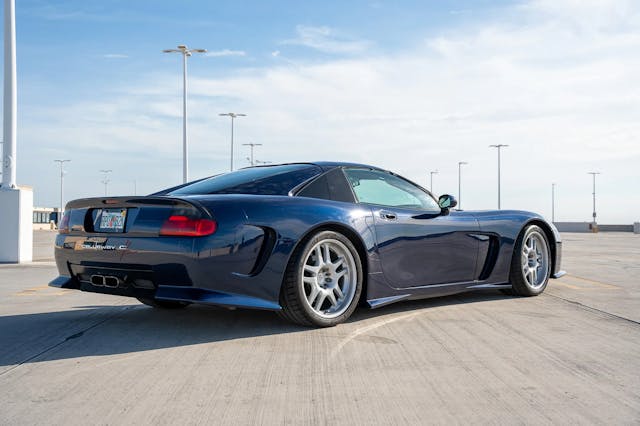
Having established that they could build high-performance Corvettes capable of taking down most any supercar, it wasn’t long before Callaway set their sights on wheel-to-wheel racing. The team didn’t start small, either—they decided to head to Europe to test their mettle at the 24 Hours of Le Mans.
Their first effort in 1994 came up short after a promising start, but in 1995, Callaway’s Corvettes managed an impressive second and third in class. Their appetite for racing sufficiently whetted, the Callaway team saw the 1997 introduction of the fifth-generation Corvette as an opportunity to build a new, exclusive road car and a potent endurance racing competitor. Enter the C12.
“The C12 was certainly the pinnacle of our offerings at the time,” says Mike Zoner, currently the Managing Director at Callaway Cars, and the company’s Chief Engineer in the late ’90s. “In [Reeves] Callaway’s mindset, competing at the 24 Hours of Le Mans was quite important to the positioning of our company. The C12 was designed right to the limits of the regulations—right at two meters wide for the classification as GT2 at the time. The idea was to build a competition car and have a fine road going version of it as well.”
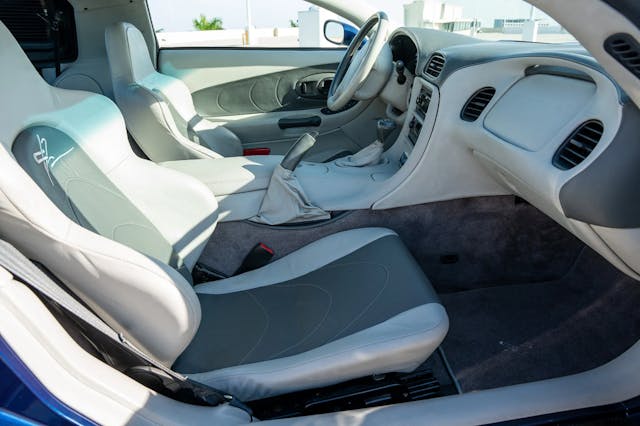
The added width afforded the C12 additional stability and, naturally, necessitated revised bodywork. Callaway was no stranger to tweaking Corvette bodies, though the C12 might have been the most dramatic departure to date. Ultimately, only the glass, door cut lines, and door handles remain from the original C5.
In order to take advantage of the added track width, Callaway completely revised the suspension geometry. While they were in there, the team added proprietary adjustable dampers with a unique spring setup. Many track-modified Corvettes switch from leaf springs to a full coilover suspension, but the C12 retained the leaf as the primary spring mechanism and added what were effectively helper springs around the shocks. This enabled the team to better set up the car’s handling characteristics for a given track when compared to the standard leaf configuration.
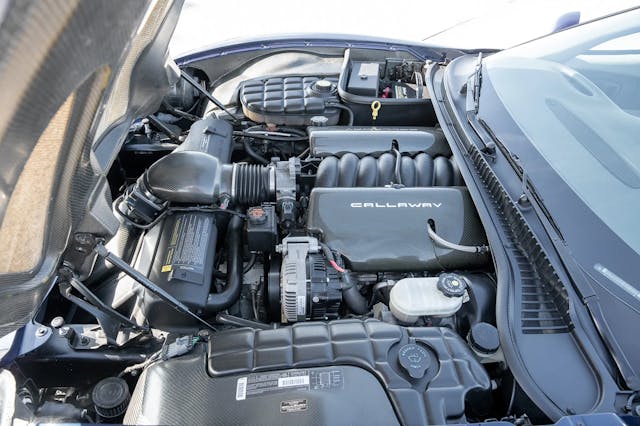
Of course, it wouldn’t be a Callaway car without some added oomph, and while you could get your C12 with a hopped-up, 440-horse 5.7-liter V-8, the full-tilt 6.2-liter mill found in Earnhardt’s example offered 482 horsepower and 466 lb-ft of torque.
Inside, Callaway swathed in leather pretty much everything that had a touchable surface, making for a much more plush interior than the standard Corvette.
Ultimately, the conversion to C12 from regular C5 left very little untouched—Callaway made a very thorough imprint on this car. The price reflected that, too: At $140k (nearly $260,000 in today’s money), this was a very exclusive automobile. And that was ok—Callaway only had to produce enough to ensure the car met homologation rules. Sources vary, but 19-20 cars are said to have been made.
“The C12 was a high water mark for us,” explains Zoner. “The Callaway twin turbo Corvettes and the C4 era’s different variants, especially the Project Sledgehammer, were great achievements, but the C12 was special because it was almost a complete remanufacture of such a capable vehicle in the C5 Corvette.”
Back at Le Mans once more in 2001, the Callaway team put the C12 on pole in its class. Unfortunately, an off-track excursion hampered the car’s ability to keep its coolant temperatures under control, and it was forced to retire. Callaway remains active in European sports car racing, and has several driver’s and team championships to its name.
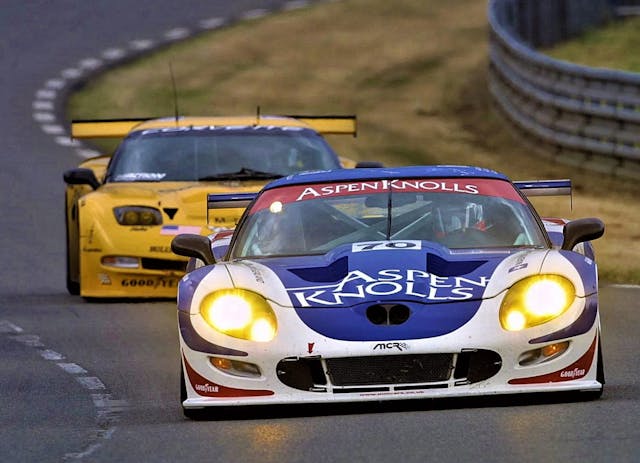
The C12 briefly shared track time with the factory-backed C5-R Corvette, a car with which Dale Earnhardt, Jr. was familiar—he and his dad co-drove the #3 Corvette C5-R in the 2001 Rolex 24 at Daytona to a second in class and fourth overall (their teammates in the #2 C5-R took the overall win). Junior had gotten some coaching from Boris Said, a road course hot shoe and occasional NASCAR competitor, and it was Said who introduced him to Callaway. Not long after, this example was delivered to Dale Jr. at Dale Earnhardt, Inc. headquarters in North Carolina.
Wearing Mauritius Blue Mica paint over two-tone grey leather, this C12 has covered 25k miles and appears in excellent condition. Dale Jr. signed the headliner and the car received a $12k recent service at Callaway.
This auction caught our analyst’s attention, not just because the C12 is an interesting, if unsung, bit of Callaway history, but also because it was a no-reserve sale. Over the last few years, several top-flight Callaway Cars, including the vaunted Sledgehammer, have come up, only to fail to meet reserve. As a result, there’s not a lot of publicly available sales data for the more rare Callaway models, and buyers and sellers don’t seem to be in clear alignment regarding what these cars are worth.
If you’re a Chevy fan, particularly a Chevy Corvette fan, $120k doesn’t seem off the mark for a genuinely usable one-of-20 car with Le Mans pedigree, built by one of the most important names in Corvette performance. That a certain Chevy racer and NASCAR Hall of Fame inductee happened to enjoy it for a good while doesn’t hurt, either.
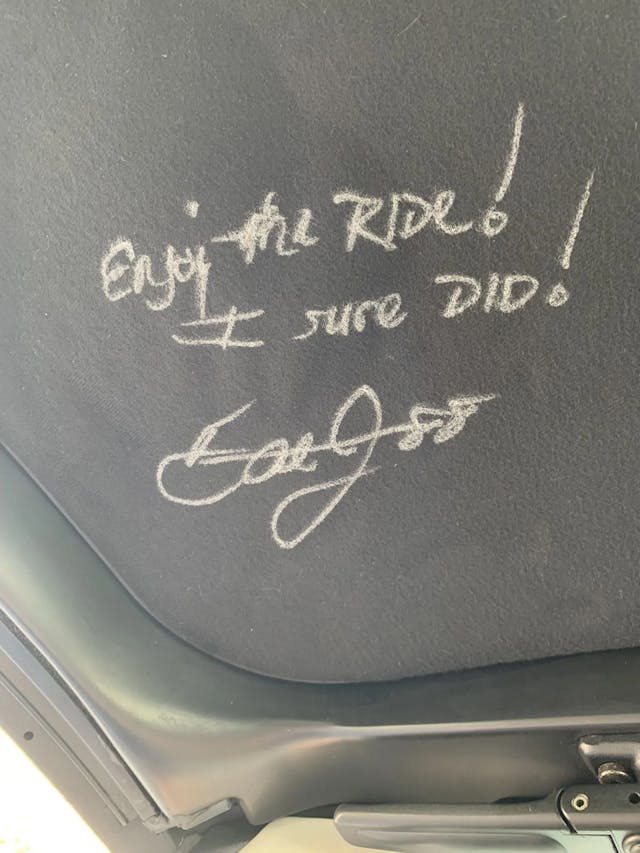



It’s a net car. Would have been cool to have seen a twin turbo version of this.
I have a 2009 C6 sitting in my garage and I can’t help but see the similarities between the Callaway C12 and my C6, both in physical design and power train. I can’t imagine, however, what a twin turbo version of my LS3 powered coupe would be like. The stock 430 hp already provides stunning performance.
What is crazy about these Calaway cars is they were amazing and fast back in the day. I recall my first twin Turbo drive. It was amazing. Today they pale to what we have today. We never envisioned this.
I know your saying the body was all different except but are you sure they didn’t use C5 sideview mirrors? The ones on the C12 , C5 R (shown) certainly look the same.
That they do. Good eye—that escaped me.